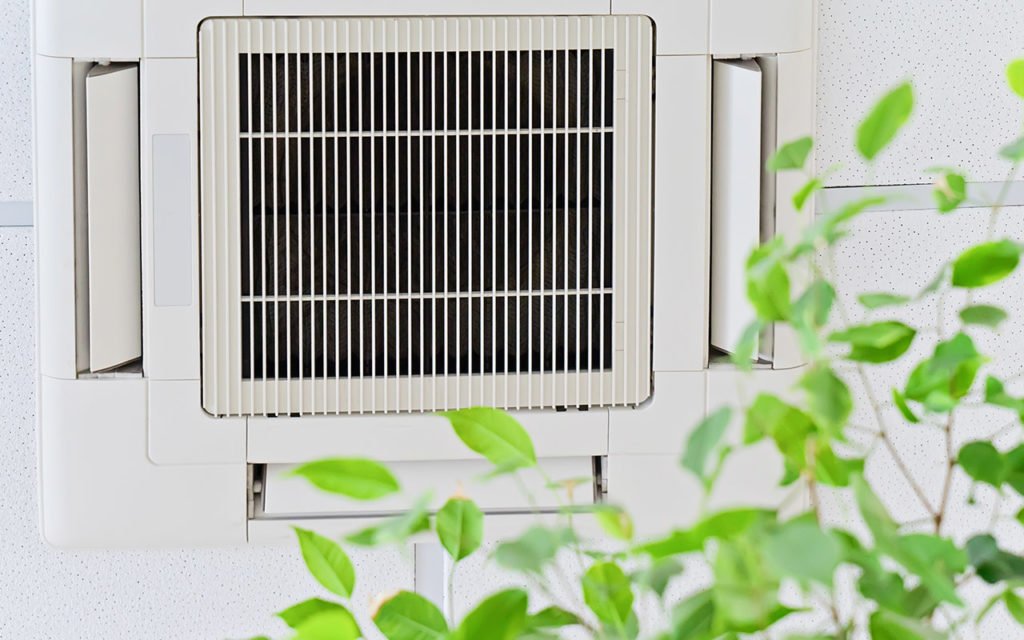
Indoor Air Quality (IAQ) is a measure of the quality of air inside and around structures and buildings, specifically relating to the health and comfort of the people within the building itself. All of us face the risk of indoor air pollutants that can negatively impact our health, but there is a lot that can be done to ensure a safe environment in homes, the workplace, and the many other places we spend our time.
Buildings have a major effect on our general well-being. The U.S Environmental Protection Agency estimates Americans are indoors 90% of their time – in homes, schools, gyms, workplaces, places of worship, or shopping centers. Whether we realize it or not, we are more often inside than outside.
Environmental health researchers study the effect of indoor air quality on human health and the results are not encouraging with the World Health Organization estimating 3.8 million people dying worldwide every year from illnesses stemming from harmful indoor air quality attributed to smoke from cooking fires alone.
There are both indoor and outdoor sources that affect indoor air quality. Indoor sources derive from inside the building itself and include combustion sources (tobacco, heating, and cooking appliances), cleaning supplies, paints, insecticides, and building materials.
Outdoor sources are pollutants that enter the building through open doors, windows, ventilation systems, and cracks in the structure and foundations. Some outdoor sources can also include chimney smoke, water supplies, and people themselves inadvertently bringing pollutants in on their shoes and clothes. If too little air enters indoors, pollutants can accumulate to unhealthy levels – thus it is important to not only ensure that quality air is entering but also a sufficient amount.
We have compiled a list of three of the most common indicators of indoor air quality in a home here, including dust buildup, moisture and humidity, and unpleasant smells. A warning sign that there is poor air quality within a building is the effects on the people inside which can be immediate and long-term.
At an early stage, occupants may experience comfort issues described as dissatisfaction with the ‘feel’ of the building environment. Complaints can include that the building is too hot, too cold, stuffy, noisy, or drafty to name a few.
Sick Building Syndrome is described as a set of symptoms that are affecting a large proportion of the people inside a building and are cause for concern. Symptoms include headaches, lethargy, decreased concentration, nausea, respiratory irritation, and irritation of the mucous membranes. These symptoms can occur shortly after entering a building and usually disappear once the person has left.
Fortunately, the two different types of discomfort described above can be diagnosed and addressed in a relatively short time with no serious damage done to the occupants. However, if poor indoor air quality is left unaddressed, building-related illnesses can occur including Pontiac fever, Humidifier fever, Legionnaire’s disease, and other serious respiratory diseases like cancer.
In an earlier blog, we detailed five common indoor air pollutants to look out for. There are non-toxic and generally not dangerous pollutants including dust, animal hair, and pollen. But, as described, there are also pollutants that can cause serious damage to building occupants.
Extremely dangerous air pollutants include carbon monoxide, radon, cigarette smoke, lead particles, mold and mildew, and asbestos.
Taking productive steps is the best way to combat poor indoor air quality. As a recommended first step, you should try to identify air quality problems by analyzing health symptoms, assessing likely sources of pollutants like ventilation, and conducting checks on odors and buildup of dust and/or mold.
Secondly, you should take action. Measure pollutant levels, especially those that are odorless and colorless. You can do so by installing a radon measurement device and having inspections from a professional.
Some basic strategies that can be used for preventative measures include weatherizing your home (weather stripping), source control (decreasing emissions of sources of gas such as gas stoves), ventilation improvements, and the installation of air cleaners.
Is it time to start taking proactive steps to ensure the indoor air quality of your home or business? If you are in the Central Pennsylvania area – call WM Buffington! Our team of trained professionals can deliver the solution you need for peace of mind.